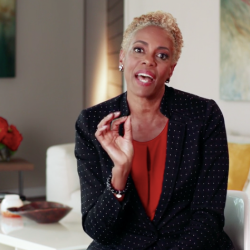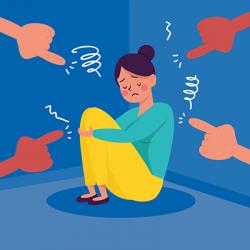What is Unconscious Bias?
Source: Lawrence Livermore National Laboratory
Unconscious biases are social stereotypes about certain groups of people that individuals form outside their own conscious awareness. Everyone holds unconscious beliefs about various social and identity groups, and these biases stem from one’s tendency to organize social worlds by categorizing. If gone unexamined, they can arise in various ways in the workplace, including:
- assumptions we make based on someone's name;
- who we listen to in a meeting;
- how we respond to and act on unconsciously bias jokes or comments in the workplace;
- or our views of job applicants during the hiring process.

Confronting Bias: Thriving Across Our Differences
In this LinkedIn Learning course, Arianna Huffington and Verna Myers discuss the impact of our cultural lens on our daily relations and how to counter bias in our words and actions. Topics include recognizing that we are all different (not erasing those differences), understanding our own cultural lens and how that it impacts our perception on the world, and how to create an inclusive environment where everyone can thrive.
Start the "Confronting Bias: Thriving Across Our Differences" Course

Identifying Unconscious Bias in the Hiring Process
Delve into the types of unconscious bias that can occur during the hiring process through the "What is Unconscious Bias" course on LinkedIn Learning. Dr. Tana M. Session will walk you through how to define a number of unconscious biases (affinity, confirmation, horn effect, etc.), as well as how the biases can impact your decision-making and how you can combat them when recruiting and hiring qualified candidates.
Understanding Microaggressions
As defined by the National Institutes of Health (NIH), "Microaggressions are everyday verbal, nonverbal, and environmental slights, snubs, or insults -- whether intentional or unintentional -- that communicate hostile, derogatory, or negative messages to individuals based solely upon their marginalized group membership*. Microaggressions repeat or affirm stereotypes about a minority group, and they tend to minimize the existence of discrimination or bias, intentional or not."
There are three types of microaggressions:
- Microinsults: Usually unconscious, and convey rudeness/insensitivity;
- Microassaults: often conscious, and are deliberately and derogatory); and
- Microinvalidations: usually unconscious, and exclude the thoughts, feelings, or experiences of a minority group.
Examples include asking someone what country they are from based on their name or appearance, telling someone the way they are handling a disability or disease is inspiring, or noting to someone that they probably don't know the topic you are discussing because of their age. These three examples are microaggressions that occur due to unconscious biases around ethnicity, disability, or age.
There are several metaphors around microaggressions, from paper cuts to bee stings. Let's use the paper cut metaphor. Imagine getting the same paper cut over and over again? Would that paper cut heal with time or would it become a scar, a constant reminder of how you are perceived by others?
Microaggressions can have huge effects on a person's identity, including causing people to mask their identity (for example, someone masking their sexual orientation), change aspects of their identity to remove a microaggression (for example, changing one's name), and can lead to depression and other mental health issues.

Dealing with Microaggressions as an Employee
In this LinkedIn Learning course, Toni Lowe, teaches you how to identify and address everyday, subtle, intentional and unintentional actions or behaviors that perpetuate bias toward marginalized groups in the workplace. Toni defines microaggression and identifies the three distinct types of microaggressions: microassaults, microinsults, and microinvalidations.
How to Address Unconscious Bias
These tips were provided by Karen Steinhauser in her article "Everyone is a Little Bit Bias" in the April 2020 edition of the American Bar Association's Business Law Today publication.
- Be aware of your initial thoughts about people and upon what those thoughts are truly based.
- Stay attuned to people around you and notice how often you engage in conversations with people who are different than you.
- Surround yourself with a diverse mix of cultural and social situations and individuals.
- Share your own experiences of bias with others.
- Educate others about the elements of an inclusive work, school, and community environment.
- Look for commonalities that exist regardless of race, religion, gender, culture, etc.
- If you see something, say something, hopefully in a manner that is sensitive to the feelings of everyone involved.
- Don’t assume bad intent.
- Slow down your decision-making process.
